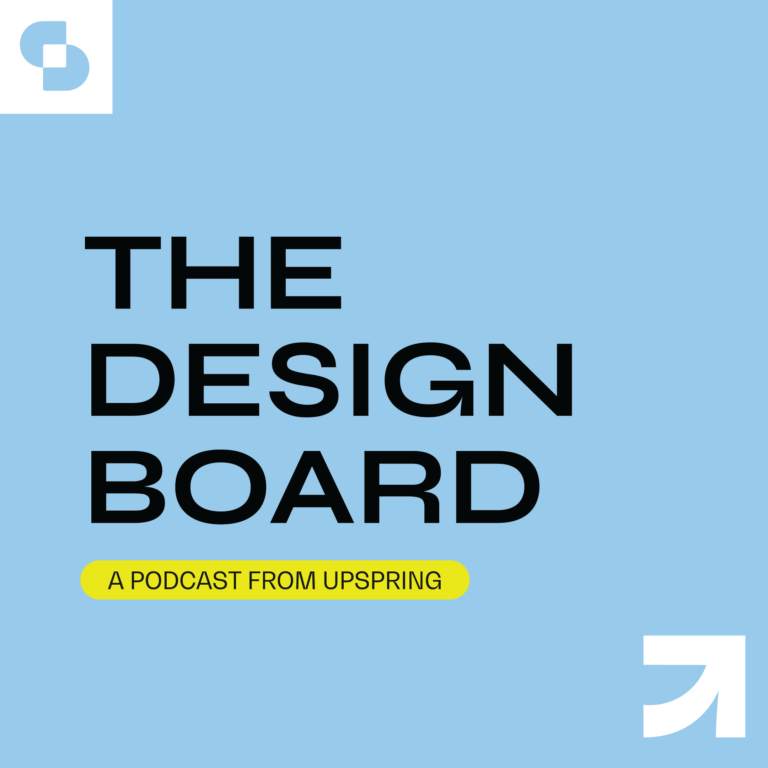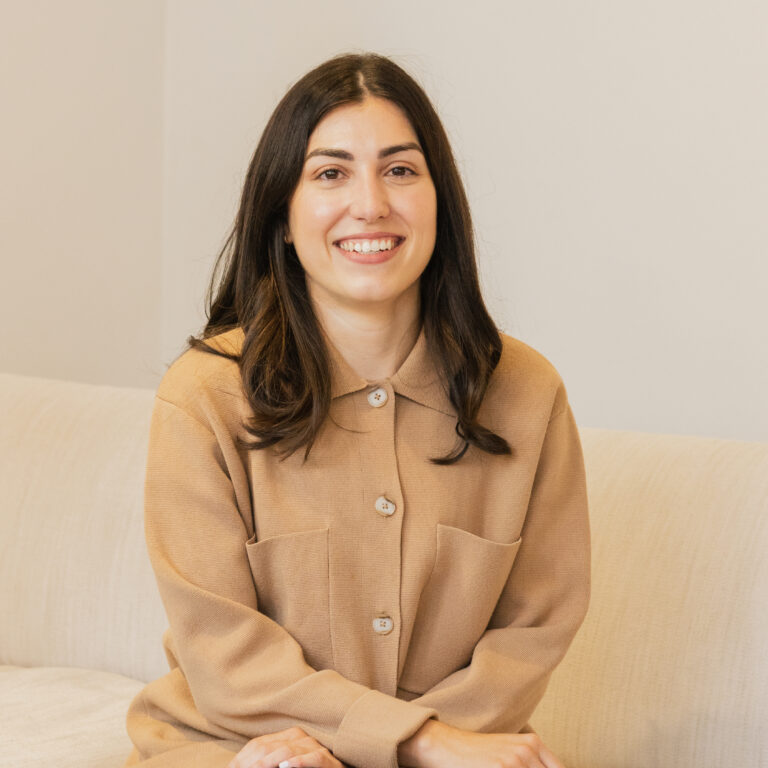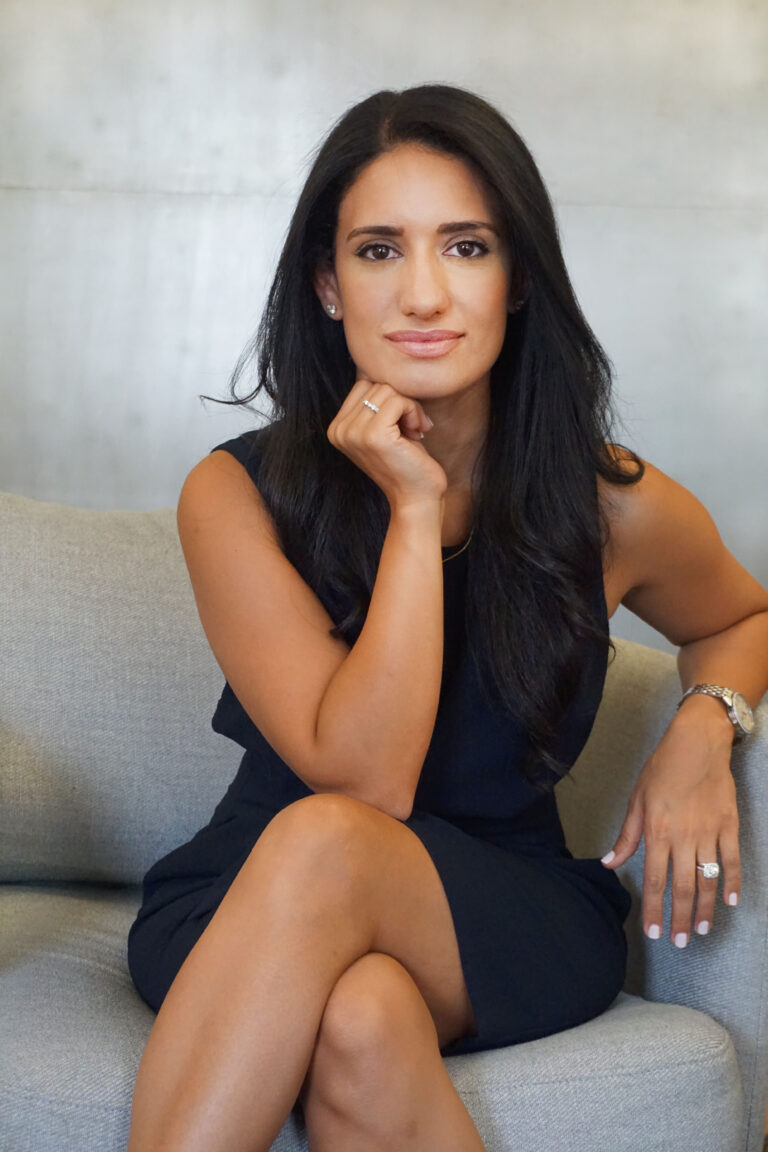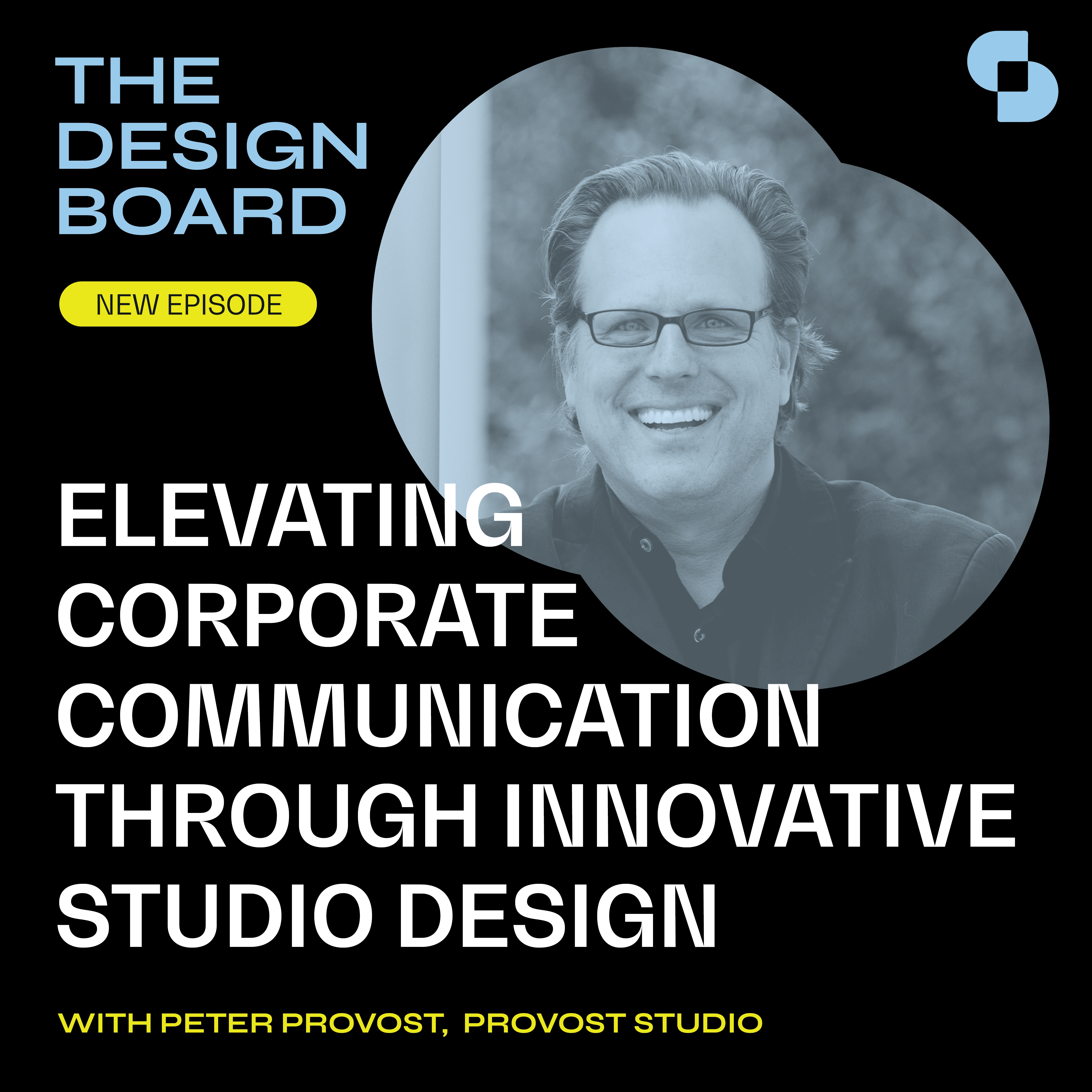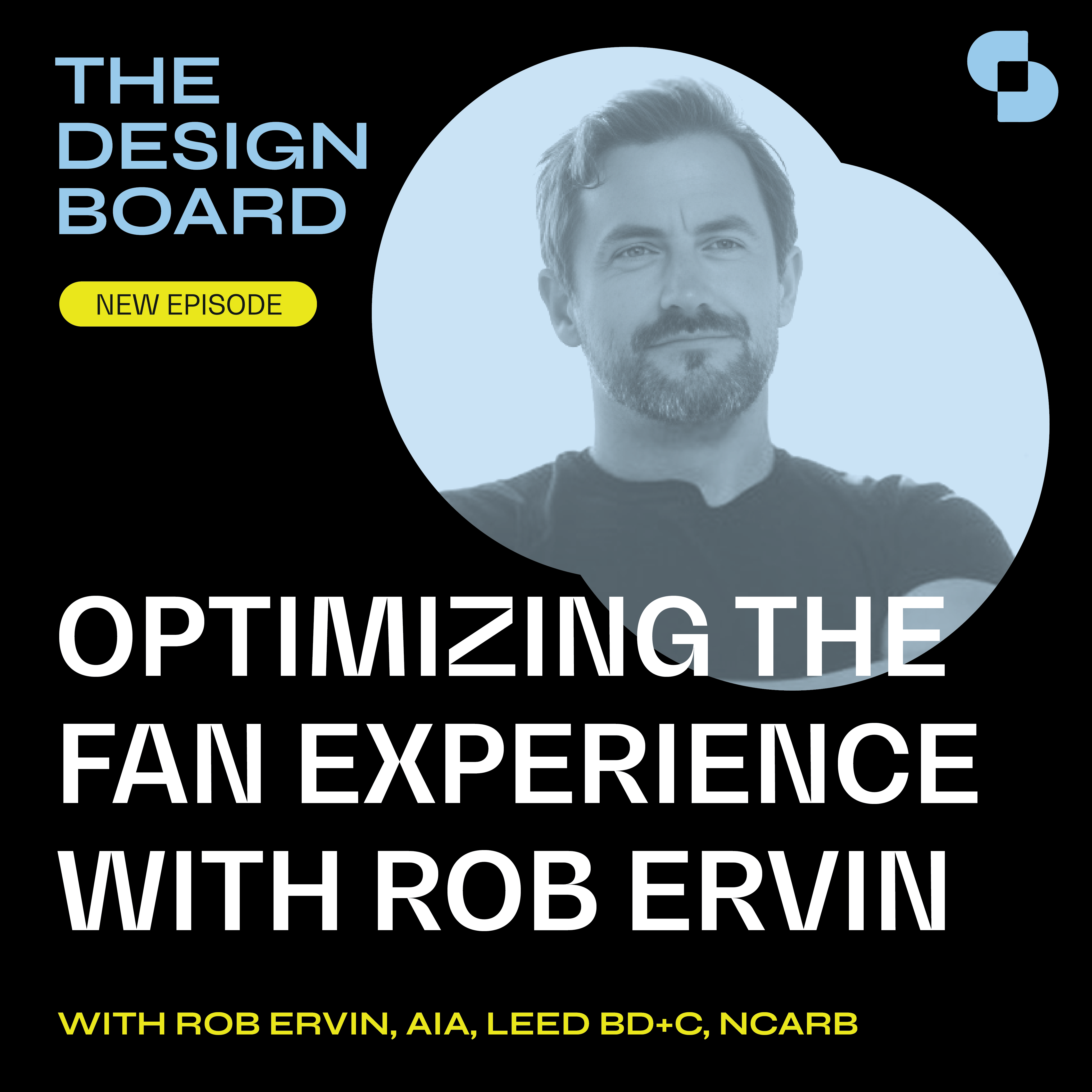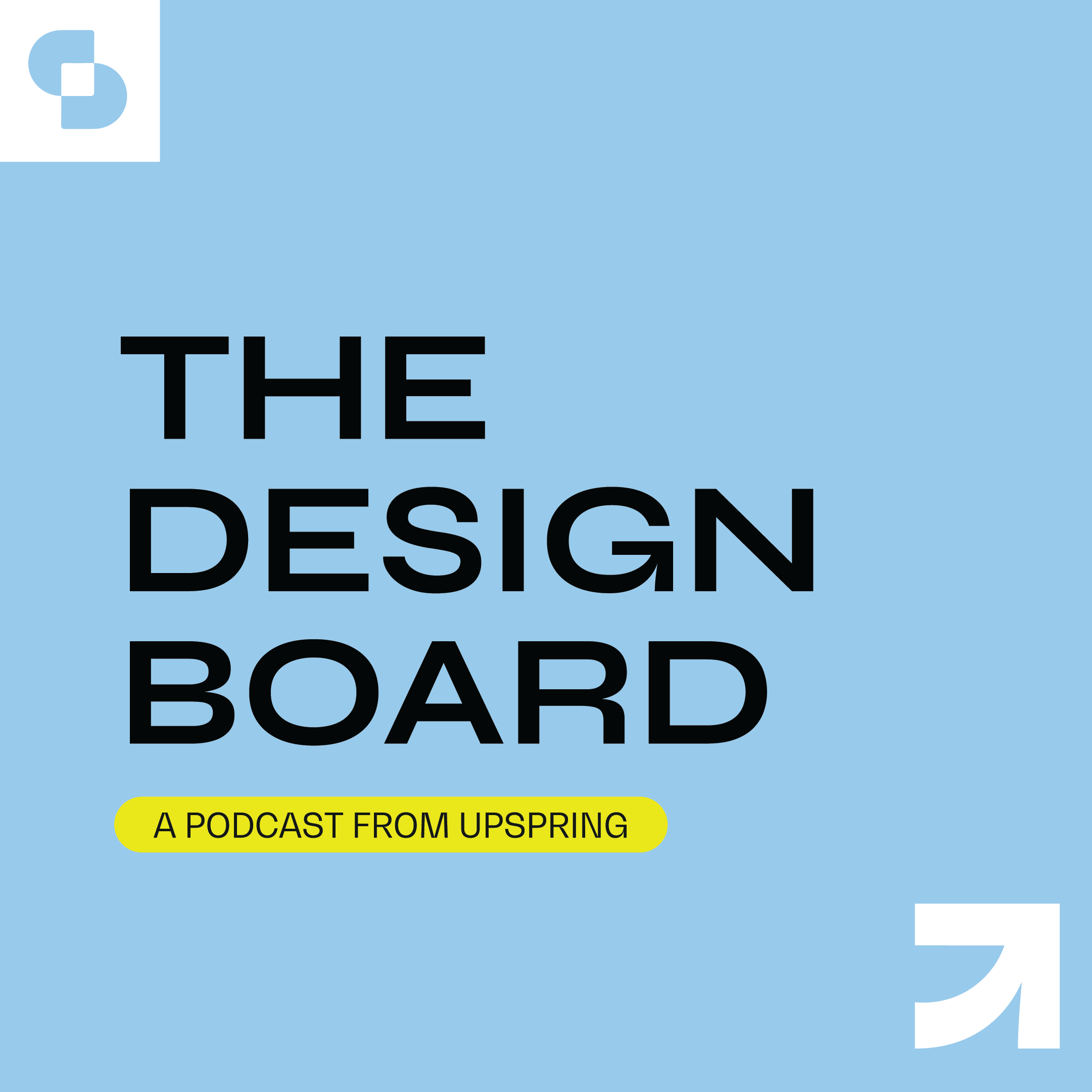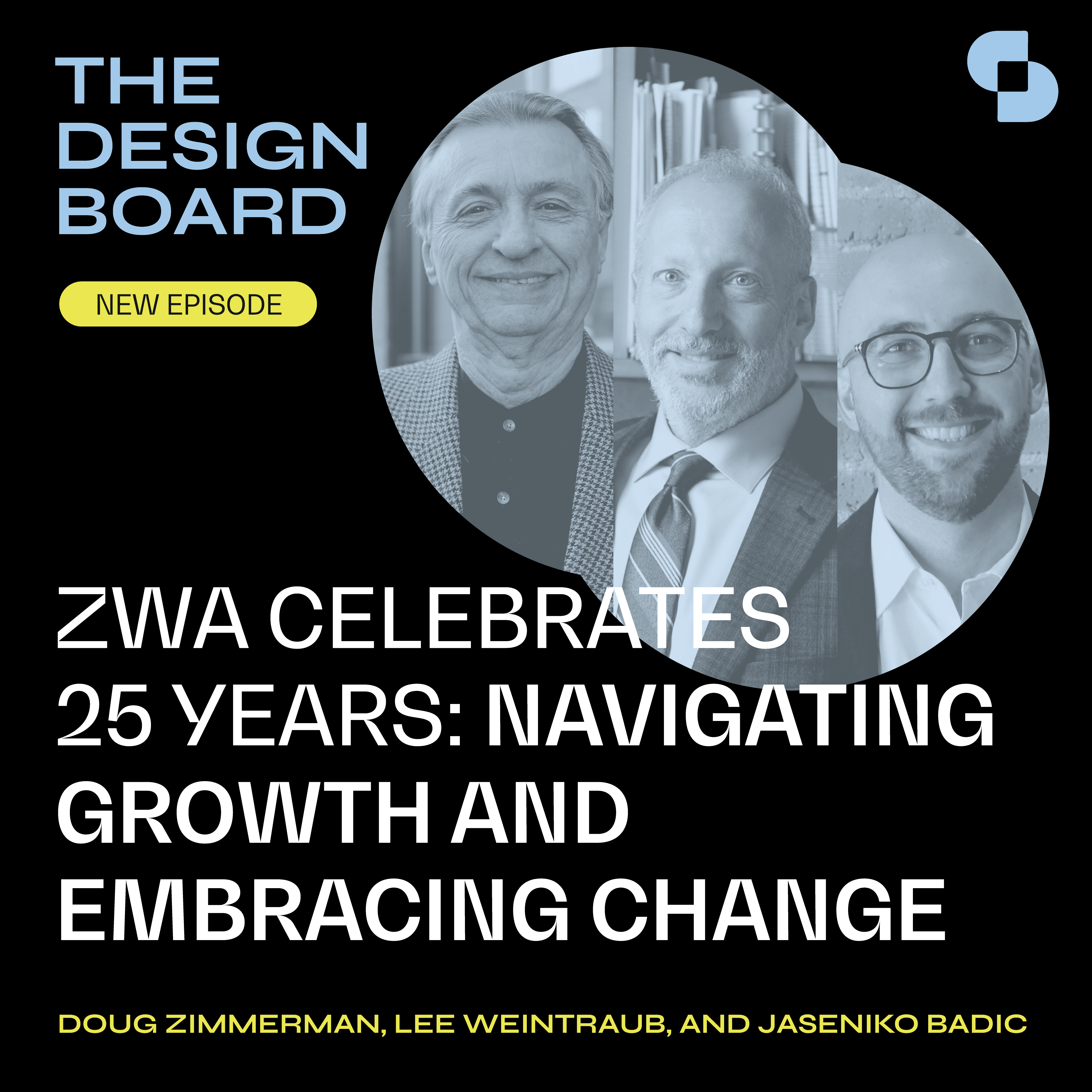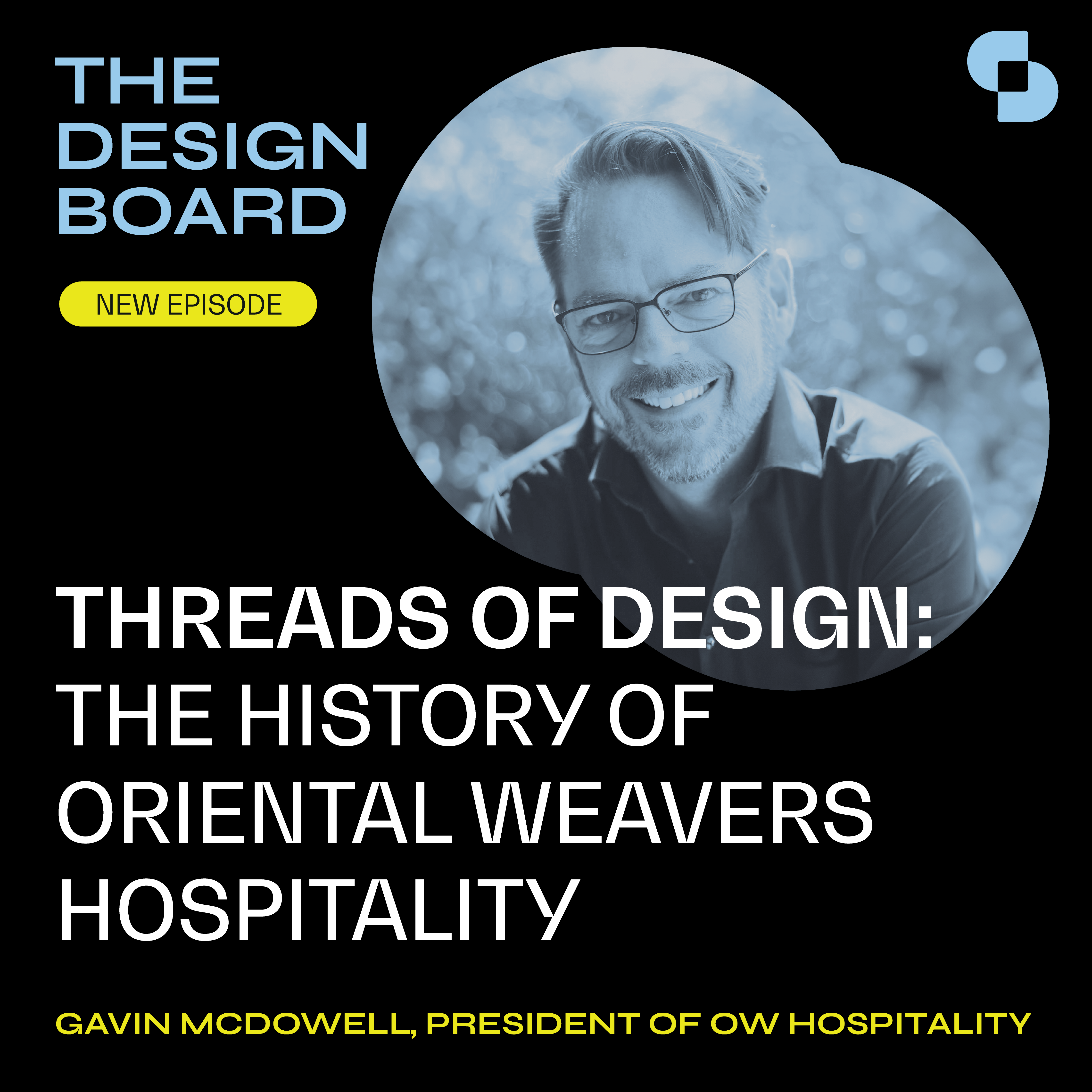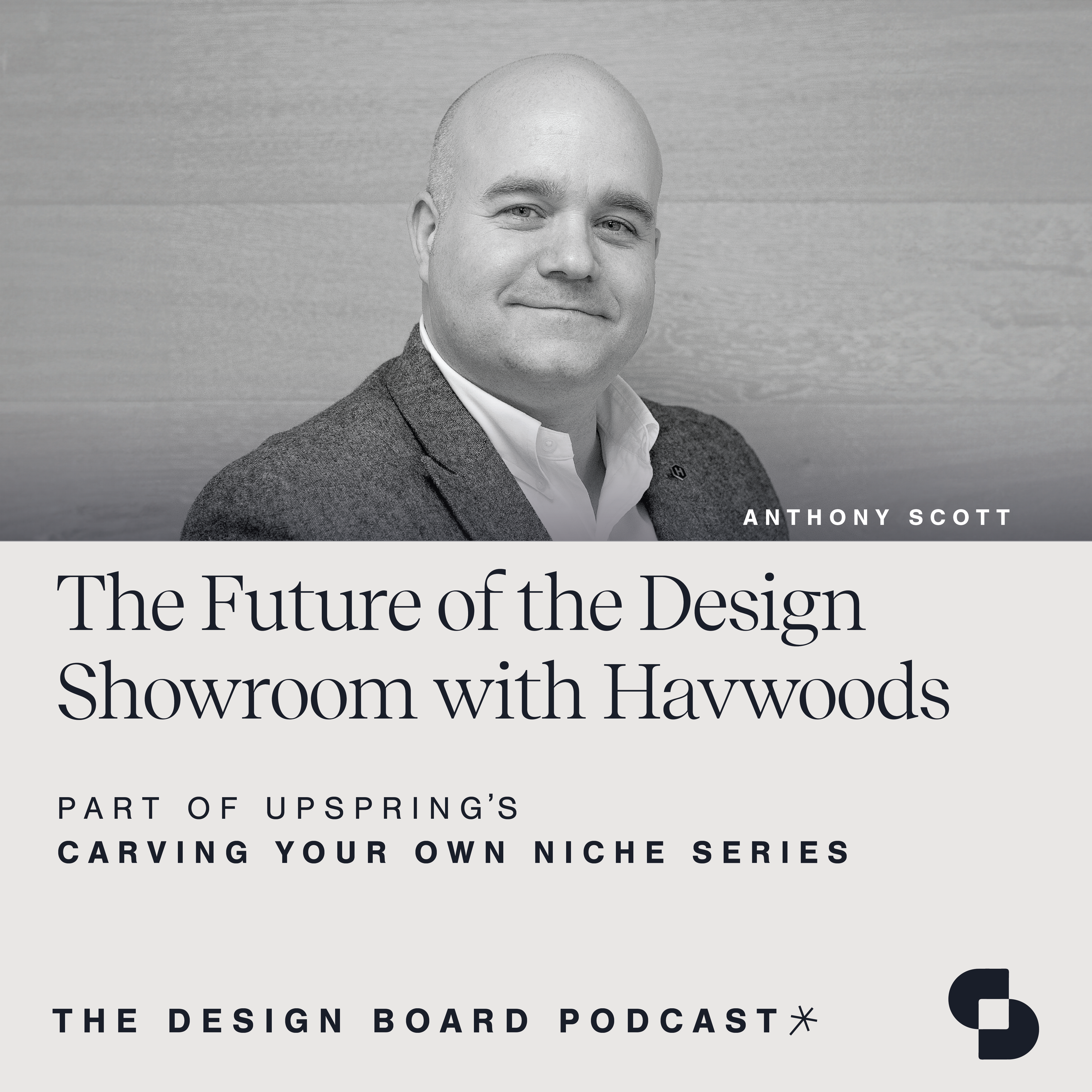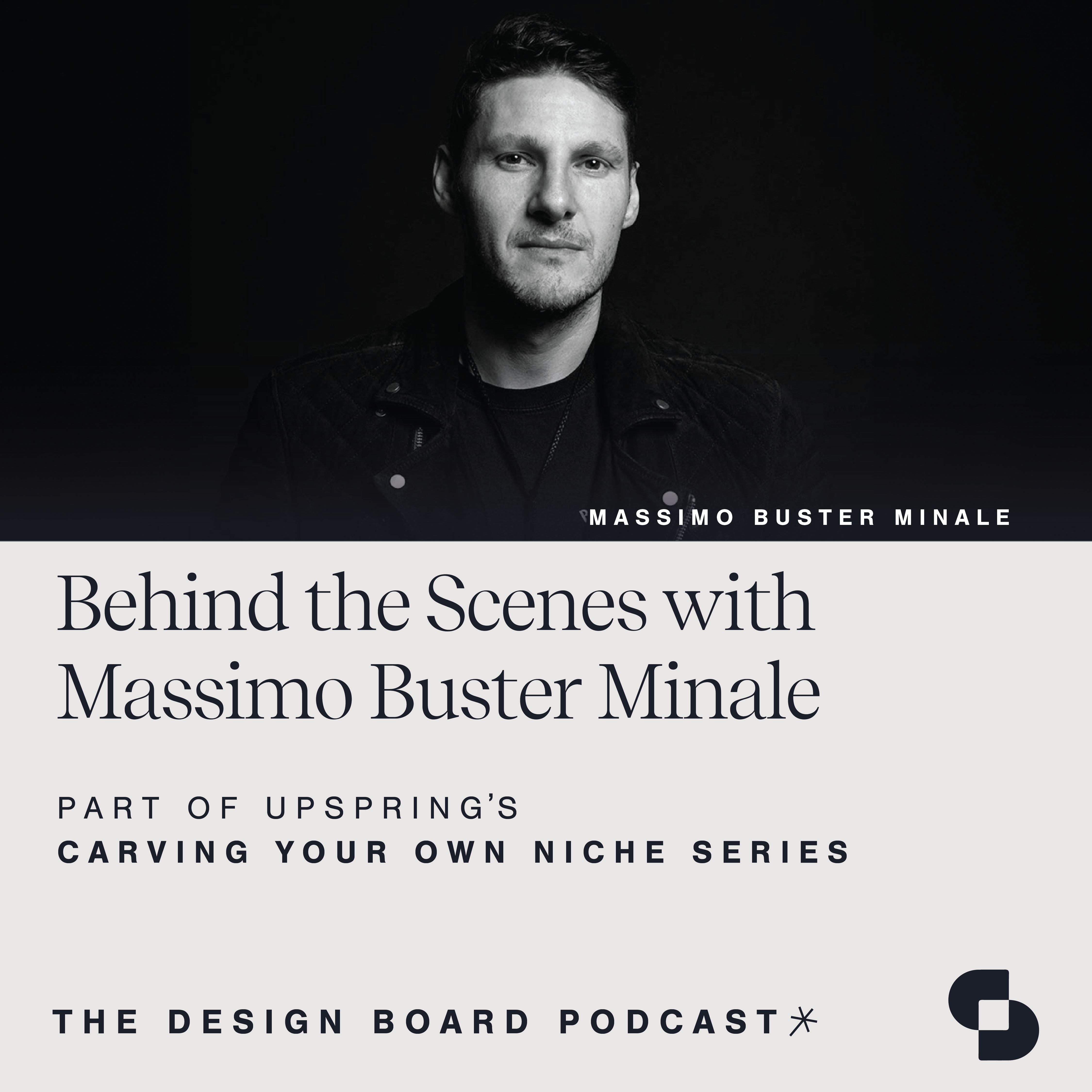An honest, authentic effort toward DEI initiatives requires transparency, accountability, and the notion that as we know better, we will do better. UpSpring’s Caroline Saba invites Elsie St. Leger and Shawnasia Black of IIDA NY’s Equity Council to discuss the importance of DEI initiatives and the foundations and roadmaps organizations can put in place to create inclusive environments.
The Design Board, by UpSpring, is a proud member of SANDOW Design Group’s SURROUND Podcast Network, home to the architecture and design industry’s premier shows.
Announcer:
The Design Board is a proud member of the SURROUND Podcast Network from SANDOW Design Group. The SURROUND Podcast Network is home to the architecture and design industry’s most notable shows. Check it out at surroundpodcast.com.
Caroline Saba:
Welcome, everyone. We are excited to kick off an episode of The Design Board today. The Design Board is a podcast by UpSpring that focuses on design, development, and everything in between. We host innovators in our industry and explore topics that support your growth in every way. Today, I’m joined by Elsie St. Léger and Shawnasia Black, two talented interior designers who have helped make an incredible push toward accountability and equity within our industry. Today, we are going to be talking about ways in which organizations can authentically support DEI initiatives.
Thank you both so much for joining me today. I’m so excited to have this conversation with you. Before we dive in a bit further, I’d love for you to give a little bit insight into your current roles and backgrounds and what got you interested in DEI.
Shawnasia Black:
Hi, everyone. I’m Shawnasia Black. I currently work as an interior designer at Beyer Blinder Belle. That’s a mouthful, but everybody in the industry knows it as BBB. I am one of the co-chairs for Equity Councils IIDA New York chapter. I mean, not to be too cavalier, but just moving in the world as a Black woman, I think I’m always interested in how I can better my people, if that makes sense, or people who look like me or identify as me or the underserved or the minority. Although my friend, she told me this term of the global majority, which I think I like that term better. Architecture sadly is a white male-dominated industry, so moving in those spaces and being in those spaces, I’m trying to somehow organically, just in the nature of who I am, started being aligned with organizations that are looking to change that in some sense.
Caroline Saba:
Amazing. Thank you. Elsie, what about you?
Elsie St. Léger:
Hi, I’m Elsie St. Léger. How did I get involved? Well, in the same way that Shawnasia did and that I’m a Black woman moving through a primarily white male space. It’s hard not to think in those terms, at least for me anyway personally, but Equity Council in particular was started in response to the continued murders of unarmed Black people, particularly George Floyd, Ahmaud Arbery, and Breonna Taylor, we just reached an inflection point. So, the four co-founders got together and started sort of a support group because we were angry and confused and we needed to mourn and vent together. From that, we became Equity Council. We grew organically. We continue to move in that direction organically, not that we don’t plan or talk about what we want to do, but it’s the spirit of our group that keeps us going because it’s hard work what we’re doing.
Caroline Saba:
Yeah. You guys are doing incredible work. We’ll be sure to add some additional links, too, so that people can follow along and get more insight on what the Equity Council is capable of. Let’s dial it back a little bit, too, for our listeners and really just explain what diversity, equity, and inclusion is and why is it so important.
Elsie St. Léger:
Wow. Well, as we’ve said, design, particularly architecture, is white male dominated. But even in interior design, which is primarily women, it’s still very much a white space. We are, people of color, are not a minority. We really are a global majority. It seems a little odd. It’s always seemed odd to me to talk about design and history and influences without bringing in the entire world, because design did not start in Europe. We have millennia in Africa in particular. We’re talking about my heritage in particular, but there’s also Asia and there’s the rest of the global South, South America, the Aborigines in Australia, and so on and so forth.
For me, there’s no conversation that’s complete if you’re talking about design and design history and influences if you don’t include the entire world, because design comes from the entire world and we live in the world. So, I don’t see how you could talk about design and a way forward without talking about inclusion, without talking about justice, and a way to create and build equity so that you can ensure that all the different voices and all the different histories can come to the table and provide solutions and spaces that people can work and live and die in.
Caroline Saba:
Yeah, I love that. Shawnasia, anything that you would want to add to that?
Shawnasia Black:
I mean, how can I? Elsie said that so beautifully.
Caroline Saba:
Perfectly.
Shawnasia Black:
Right. I will add that I’ve been moving kind of in a space where diversity, equity, and inclusion not only includes a person’s race or ethnicity, but occupation. Architecture and design, for whatever reason, there’s this “tier” of people. It’s architects at the top, interior… It’s really not like that at all. I think in order to have very thoughtful and very impactful built environments, everyone across the board needs to have a very level playing field because everyone’s job is important. I’m talking down to the textile manufacturers who are making the fabrics that are going onto the furniture, that is going into these buildings. Everyone should be treated as knowledgeable sources and important components to these built environments. For me, I’ve been moving in that space and maybe because I’ve been around a lot of architects. No shades to architects. I have a lot of great friends who identify as architects, but some of y’all have egos and it’s just unnecessary. For what? We’re all trying to make this world a better place at the end of the day, a beautiful place. Let’s just get on the same board.
Caroline Saba:
Yeah, you’re giving me chills. I love that perspective. I think just every single component that ties into the impact we have on the built environment is so important to consider.
Shawnasia Black:
Yes. Yes.
Elsie St. Léger:
I love that. Some of my friends identify as architects,
Shawnasia Black:
I’m sure I might hear some shade after this.
Caroline Saba:
No, positive space.
Shawnasia Black:
Yeah.
Caroline Saba:
Over the past year, we’ve seen so many different organizations pledge their commitment to DEI initiatives. From your perspective, why are these initiatives an integral part of an organization’s business?
Elsie St. Léger:
Oh. Well, I mean, if they’re making the outward statement, our optimistic selves are hoping that they’re actually doing the real work. You have to start somewhere. I mean, that’s basically it. You have to start somewhere. What we’re hoping with Equity Council is that we can, in our way, keep their feet to the fire. Don’t just make a statement. This is not performative. You’re not going to get applause for saying the right thing.
Caroline Saba:
Yeah, I love that.
Shawnasia Black:
I think this might be a good point to plug in our pledge. We have a pledge that we have tasked firms and organizations to sign, and it’s really what Elsie says. You sign this pledge, that means you’re committed to not just posting a “Black square,” you’re really trying to do the work. In that same regard, we also have events that we’ve planned throughout the year, the season that will really challenge organizations, and just people in general in this industry to think differently and just have an open space to talk whether it be with our Lunchtime Series or actually do the work, which is where we’re currently at right now with our Action Lab series. Because it’s just not a statement, you really got to talk the talk and walk the walk.
Elsie St. Léger:
Exactly. Exactly. Any great movement in history starts out small. Sometimes it’s very, very quiet, under the radar, and then suddenly you’re faced with a whole movement. We are willing to start small. If our conversations are only with 10 people, it’s just as valuable as if that conversation were with a million. We’re willing to start small and we’re saying it’s okay to start smell. We want people to know. They make their statements, and then they’re kind of out there, and they’re like, “Okay, where do we go from here?” We’re providing a roadmap. We’re providing a way forward. It’s one way. It doesn’t have to be with Equity Council, but we’re providing the resources so that they can make their way. Even if it’s not with us in partnership, that’s fine, but start the conversation. Don’t just say something and then walk away. That’s not a conversation.
Shawnasia Black:
I’ll add to that with… because I don’t want to come off like we’re the DEI or JEDI experts.
Elsie St. Léger:
Yeah, not at all.
Shawnasia Black:
Not at all. This is a learning experience for ourselves, for being a part of the committee ourselves. I don’t want to speak for you, Elsie, but I feel like I’ve grown tremendously just being in this role and being a part of Equity Council for the two-plus years that I… or two years. Time doesn’t mean anything to me anymore. For as long as I’ve been a co-chair, I feel like I’ve definitely grown leaps and bounds just in being involved in these conversations. I think that’s the key thing to what Elsie’s saying, like just start. Just have the hard conversation. There has been so much growth with just having the hard conversation.
Elsie St. Léger:
Yes. We’ve had some hard conversations and we anticipate more hard conversations, difficult conversations, uncomfortable, painful conversations. I don’t think you can avoid that in this kind of work. And I think that the design community and the design industry needs to be ready for those difficult conversations, or at least anticipate those difficult conversations because they’re going to happen. They have to. There are too many things that the design community needs to make itself accountable to for it not to start down that road. For the design community at point to not be honest about the realities or at least that they have to change is disingenuous and disappointing, whoever believes that.
Caroline Saba:
Yeah, absolutely. I think that authenticity and genuine aspect of it is so important. After you start those stepping stones, you start that conversation, especially now, too. The younger generations crave that. They want to know that you are committed and they want to see that improvement happen over time. I think those genuine efforts require, like you’re saying, that accountability and transparency. Do you have some advice on what ways organizations can champion this in the workplace particularly?
Elsie St. Léger:
Okay, advice? Listen. Advice, that’s dangerous. We can provide a roadmap and we have devised something of a roadmap and think that that roadmap can be a foundation for how to move forward. But advice? No. No. I don’t know that there’s advice. Let me just back up a little bit. When Equity Council started, we based our way forward on four pillars, and I’m just going to read them verbatim.
Cultures of inclusion, increased racial diversity, education and communication. Cultures of inclusion and increased racial diversity, to me anyway, are kind of obvious, but that’s not true for everyone. Education and communication can mean different things to different organizations and different people depending on where they are culturally, socioeconomically, professionally. That’s why I’m saying advice… But we can offer some foundation.
Culture of inclusion, for instance, is creating a safe space where people can come as their authentic selves. That is not to say that there’s no judgment, that there’s no disagreement, that there won’t be differences and difficulties moving forward, but it is clear that everyone is welcome at the table. Just that one alone is very difficult for many, because more equity or something that looks like equity for someone else always seems to mean less for someone else, for the privileged.
I’ve never quite understood that mentality until the last few years when I’ve watched knee-jerk reactions to, “Hey, guys, we really need to talk about the fact that here we’re at a table of 20 and there’s one Black person. What’s going on?” “Oh, what are you trying to say?” “Okay, I just pointed out a fact here. This is not an accusation. This is not a call to revenge or pointing fingers or…” At this point, blame is not… It’s not part of the equation. It’s dealing with the realities. Part of that reality is going through the history, yes, but at this point… Blame? What’s the point of that? Again, starting with cultures of inclusion, how do you make that happen and who do you invite to the table? I mean, my personal answer would be everyone because you don’t know who’s going to come, and then you go from there. I don’t mean to take this all off, Shawnasia. Please take the floor.
Shawnasia Black:
Oh, don’t mind if I do. No, I love everything Elsie is saying because I, too, have been witnessing just knee-jerk reactions to… or rather being in Equity Council and planning our events and the intention that we have and how we’re trying to move in the design world. It’s really coming from just a heartwarming open space. Hearing some of the feedback that I’ve heard, it’s just like, “Oh, no, that’s not who we are at all.” I don’t want to overspeak or speak for anyone else, but more recently I’ve heard that, sadly, it doesn’t feel that everyone who falls under the BIPOC umbrella feel welcomed. To some extent, there’s this perception that it’s for Black and Brown people only, and that’s not the case at all. Because if you open up any American history textbook outside of Florida, you’ll know that Anyone who doesn’t identify as a White American, which that’s a whole another conversation, has faced some disparities, has faced some inequities, has faced some type of hate.
There are different levels, there are different pinpoints, there are different experiences, but all of it matters and all of it is welcomed at Equity Council. I think, for the businesses, my biggest piece of advice is with everybody sitting down during the pandemic, everyone’s eyes open. I don’t know whose eye wasn’t open. If you weren’t shocked out of that timeframe, then clearly you’re not part of this new world that’s moving forward. Because I almost felt like there was kind of a lull happening with all the movement in the progression, and then we had the young man, Tyre Nichols, I believe that’s his name. That situation just happened and then it was another uproar. Some people were like, “Well, I knew this would happen again.” Some people were like, “Oh, my God. I can’t believe it’s still happening.” But either way, the conversations are still happening. The businesses, if you’re not involved in these conversations, whether on the client’s side or internally, you’re doing something wrong.
Caroline Saba:
Yeah. I think you both are saying creating that space where people do feel comfortable and feel that inclusivity that needs to happen and start with that leadership team. I think, like you were saying, Elsie, too, it’s maybe not necessarily advice, but giving people structure and a roadmap that they can potentially follow and then tailor to their organization. I love that.
Elsie St. Léger:
Absolutely.
Caroline Saba:
I know you both mentioned, too, there are tough conversations throughout this. I’d love to hear, too, what you think might be the most difficult part of implementing a DEI program and any suggestions you might have for overcoming those challenges.
Elsie St. Léger:
Oh, boy.
Shawnasia Black:
Yeah. I could start with this one because I think I was touching on it a little bit with my last response. It’s that there are so many injustices and there are so many initiatives that you want to tackle. You want to make change and it’s kind of hard to identify where to start, which is why I align with what Elsie is saying very much if you just start small. You first identify that there is a problem, and I think that’s the hard part when you just admit to yourself like, “Something is wrong here.” Then also in that regard, be vocal enough to say that out loud. There’s two steps to that. It’s identifying like, “Oh, there’s something wrong,” and then being the one to say something because those are two very scary points. I think, because you want to just make change everywhere, you kind of get stuck on where to start implementing these changes.
Elsie St. Léger:
Anytime you identify a problem or an issue can be a fraught position. It’s hard to not sound either naive or cavalier when you’re talking about taking that first step or anticipating some difficulties, but I think really, as Shawnasia said, you take that first step and then you say it out loud and then take it from there. I mean, in most ways it’s that simple. I think you have to think of it as that simple. It’s, again, taking that first step. When a baby takes their first step, they’re not thinking, “Oh, my God. How am I going to get from 59th Street to the village and do that in 20 minutes? “They’re not thinking that. They’re like, “I’m going to take my first step because the banana is over there.” That’s all right. It’s just one step at a time.
Caroline Saba:
I love that. That’s great.
Elsie St. Léger:
By the way, that’s how I took my first steps.
Caroline Saba:
For the banana?
Elsie St. Léger:
Yeah.
Caroline Saba:
I love bananas. I almost got a smoothie on the way here.
Elsie St. Léger:
Well, the funny thing is that I don’t even like bananas, which is hilarious now. But my mother’s like, “I don’t understand how you don’t like bananas. That’s how I got you to walk.”
Caroline Saba:
That’s too funny. I love that. What about some strategies to keep your applicant pool diverse? What can you do if diverse candidates aren’t applying to positions in your organization?
Elsie St. Léger:
Oh. See, now you’re asking a really hard question.
Shawnasia Black:
I’ll let you take that one, Elsie. You can start with that one.
Elsie St. Léger:
Yeah. That is pointing to a fundamental structural issue in the industry. It means that you… Well, I’m not going to make a blanking statement. What it may point to is that you are reaching into the same pools of talent over and over and over again. You got to expand your search, you got to expand your pool, you got to expand your base. It’s how to do that that can be difficult, and it’s where to start that can be difficult. I mean, if we’re talking about design industry and design education… I mean, this is my second career. I went to design school while I was still working in my last career, and I was not surprised but still disappointed to find that I was going from a mostly white space to a mostly white space.
Now that I’m on the other side of that and looking to fill out a staff, I’m finding that, though, going back to those same pools don’t work right, because it’s still a mostly white space. Then now we’re talking, “Okay, well if that’s true of design schools, how far back can I go to ensure that the pool that I go back to for talent is more diverse?” Now we’re talking about something that’s not just, “Okay, I have to find somebody to fill this spot in the next couple of months,” to “How am I going to have a sustainable business and sustainable model for the future?” Because, again, this is long-term thinking and long-term planning. So, if we have a school to design or pipeline problem, then we have to start with the students.
With students, we talk in private school students, public school students. Are we talking this particular city or that particular city? Are we talking about this socioeconomic class versus that one? There are all these questions that now come into play, which is why people get frozen like, “I don’t know where to start,” because it really is daunting when you start thinking about just how broken the system is at this point. Where do you start? [inaudible 00:24:02] into problem, as we say, and then, two, investing some time to investigate how you can expand your own worldview. It’s going back to that baby taking the first step. Take the first step.
Even if you’re reaching back to the design school you went to and saying, “All right. Listen, we’re looking for this type of applicant,” meaning you got these kinds of qualifications and they have this type of degree and this type of education, “We would like to partner with you to ensure that you are reaching out to a more diverse pool of students,” so that when I come to you, I can actually look at a diverse student body and say, “All right. Now, let’s see who’s qualified.” Because now we’re getting closer to equity. It’s closer.
It may not be perfect, but it’s closer, because now if you are providing me with 10, for an even number, 10 graduates. And in that 10, you’ve got two people of color, one Black, one Asian, maybe you have a Jew student and you have a gay student also in the mix. Now we’re talking, “Oh, okay. This is going to be interesting.” It’s exciting because now you’re having different conversations with these potential employees and you are already in a different space. It’s forcing the employer to get out of their comfort zone and it’s providing these students and potential employees with a chance to show who they are and what they can bring to the table.
Caroline Saba:
Yeah, I love that. That’s great. I think that broadens a perspective, too. Like you both are saying, it really starts with identifying that there is a problem and then activating on those steps to put solutions in place.
Elsie St. Léger:
Yeah, absolutely.
Shawnasia Black:
I think also some of that falls on the shoulders of people who are already in the industry. Elsie talked on it a little bit, but tying back to the students. I, too, started interior design as a second career. Had I known what interior design was, this path would’ve been a lot cheaper, honestly, because I got a lot of student loan debt, because I got a lot of degrees, and a lot shorter. But some communities sadly are not experienced to this creative field. It’s not just exactly an interior designer architecture, but just product making and so on and so forth.
Knowing that myself, I tend to always try to look back and see who I can help. I am on the advisory board for my alma mater that I went to design school for. I’m also on the advisory board for my first college as well for a networking with black alumnis, because in that group, it wasn’t a design school that I went to but at least I’m there as a representation to show that you can pivot after college because I think that’s also, again, another conversation that we can have for another podcast. But just being a representation in the industry is starting somewhere, too. It’s small step as well. All these little baby steps to the banana, like Elsie’s saying, we’ll all get there one day if we take all these little baby steps.
Caroline Saba:
I love it. No, I think that’s great. I have another tough question for you both and then we’ll end it on a piece of advice for younger students, but tangible steps organizations can take to eliminate bias in the hiring process. Say, now you do have these diverse applicants. What does that look like now when you go through the hiring process?
Elsie St. Léger:
You’re not making this easy.
Shawnasia Black:
And I’m still drinking my coffee, so these questions are…
Elsie St. Léger:
I wish I had some coffee, too. Now, man… Oh, that’s a good question. It’s a very good question and I’m not sure I have an answer, but I’m going to share an anecdote. I was a candidate for a job that I eventually got, actually, and the HR person, because this was the last step before officially getting hired, had a set of questions. She went through the questions and I answered them as best I could. Then she got to one question and, obviously, was not thinking about how this would hit when she asked. She asked me, “What would you do to diversify your team and what steps would you take to identify and work out problems within your team as it comes to diversity?” I’m like, “No…” I look at her and I go, “Did she forget that I’m Black and that I’m the one adding the diversity question here? Okay.”
I answered her honestly. I have never been asked that question because I’m always a diversity candidate. I would like to not be a diversity candidate. I would like to be merely a candidate, someone who has the qualifications to fill a particular job. She said, “Well, think about it.” This woman was not ready for a conversation. “Well, think about it.” And I go, “I don’t know how to answer that. I don’t know, because I’m always a diversity candidate.” But it forced me to think about and it took a while. I mean, it wasn’t immediately; it was a few years later because the story made me laugh every single time. You’re asking a diversity candidate how to talk about diversity to another diversity? Okay, fine. But it made me think about how difficult it was for the person on the other side of the table for me to reach certain goals, whether they be about DEI or whatever it is.
That’s why I don’t have an answer. I do have to say, though, that it’s very frustrating as a Black woman, being asked to come up with the solution for the oppressed. I’m not doing the oppressing in this particular scenario and it’s always been in this country anyway, and probably around the world, that the oppressed have to come up with their own solutions. How does that work? That means that we are constantly in turmoil and evolving and there’s absolutely no work being done by those who are in the privileged class. That’s really frustrating. Again, that’s why I don’t have an answer for you today. I don’t know how to answer that question.
Caroline Saba:
I think the non-answer is an answer, though. I think, like you’re saying, it comes through. It needs to start at the top with the leadership in those organizations to get on that path, create those stepping stones, that diversity is there. I hear you. That question was a curveball. I think I loved your response, “I don’t have to answer to that right now.”
Elsie St. Léger:
Thanks. Especially in this country, we have been asked to become part of the mainstream, whatever that means. That mainstream even though includes very much so contributions of, say, Black Americans, I’m not considered part of the mainstream. Why am I coming up with solutions for the mainstream if I’m not part of the mainstream?
Shawnasia Black:
Say that part again. [inaudible 00:32:26].
Elsie St. Léger:
It makes answering a question like that very difficult for some of us because you are asking us to come up with a solution to a problem that we did not create.
Caroline Saba:
Yeah, exactly. Yeah, that’s tough. This has been such an incredible conversation. I think it’s one that needs to continue to be have. I think, too, that’s why everything that you both are doing with the Equity Council, too, is just so inspiring for everyone within the industry. I’d love to end it just with overall advice that you would give, especially younger generations or people entering the field, where they can go to get support as it relates to DEI initiatives.
Shawnasia Black:
Equity Council.
Elsie St. Léger:
There is a point to that. We laugh, but there is a point to that. I was told when I was in design school, and of course it hit me differently because I was a somewhat older student, but there’s something to be said for relying on your fellow classmates because they’re your future colleagues and peers. That’s a start. The second would be to join professional organization like IIDA in New York, because in a larger group, you may find someone else… Not even you may. In IID, you will find someone else who looks like you and who may have comparable experience. That’s two.
And three, just remember you’re not alone, especially in New York. I am rarely the only… if I’m looking industry-wide, and that’s encouraging. Just know that you can always find mentors and people your own age. You don’t have to look up to someone older or with more so-called experience because they may not know. They may be just as clueless as you, so you find mentorship. That’s to say you find… There’s so many sources for mentorship and be open to that. Again, DEI work is not easy. It’s not a short-term thing; it’s a long-term journey. Sometimes difficult with mine fields that you would certainly hit, but being open and ready and willing to have those conversations, you’ll have the tools needed to deal with those difficult times, I think, and deal with the issues.
Caroline Saba:
I think that’s great.
Shawnasia Black:
I’d like to add just on a internal. Starting out, fresh out of design school, there’s a little bit of a… I hate this term because I feel like it’s been so used, but imposter syndrome, if you will. I just want to reinforce that you belong, you matter, your voice is important and is needed for this industry.
Caroline Saba:
You’re giving me chills again.
Shawnasia Black:
Yeah. Because even at the time now… Looking how old I’m going to turn in September, but at the ripe young age of 26, I felt like a deer in headlights when I graduated from my school and was trying to get into the workforce in the interior design world anyways and restarting and feeling like that baby taking their first steps again and just feeling very unsure of myself. I had a lot of conversations with my mom like, “I think I’m meant to do this,” and so on and so forth. I love my mom because she always reassured me every time. She’s like, “I knew you were meant to do this because you got excited about a can of paint,” a longer story that I’ll tell another time. But, yes, finding the support system externally, but also reassuring yourself internally at the same time is going to be very, very helpful. The more you found that support, especially when they start to look like you, the stronger you’ll build that up within yourself. I just want to emphasize that you are exactly where you’re meant to be and you’re needed.
Elsie St. Léger:
Exactly. And mentors take different shapes, different ages. You never know who your mentor’s going to be. It could be your mom, like Shawnasia. I mean, my first mentor in design school was one of my first teachers who was not Black, not a New Yorker, not… I mean, there was nothing that should have made us click, but we did. She was wonderful. I still thank her to this day for instilling me with the confidence to continue. You just be ready, be open, just do it. You are valued.
Caroline Saba:
I love that. Amazing. Well, this has been an incredible conversation. Thank you so much for joining me today.
Elsie St. Léger:
Thanks for having us.
Shawnasia Black:
Thanks for having us.

